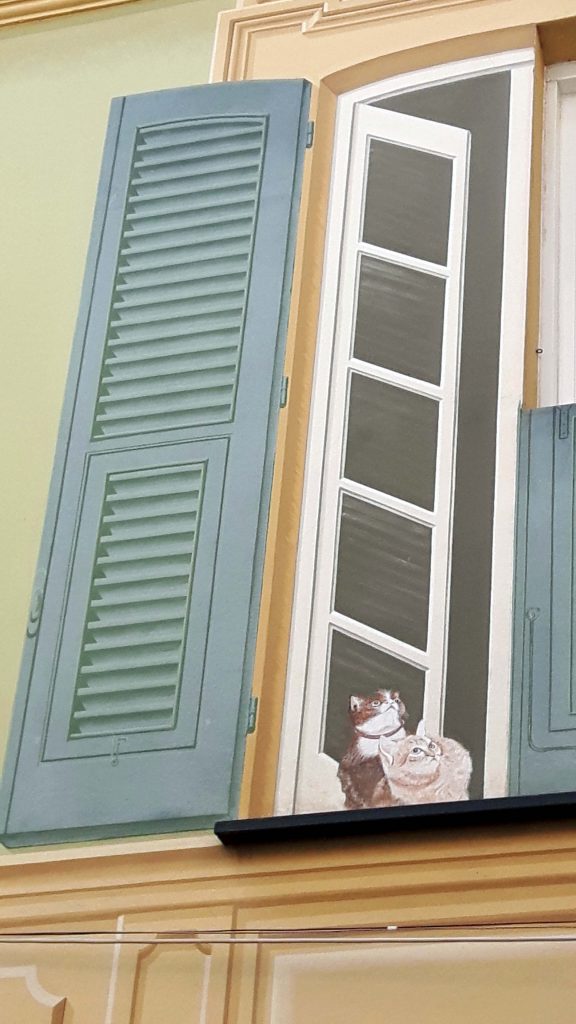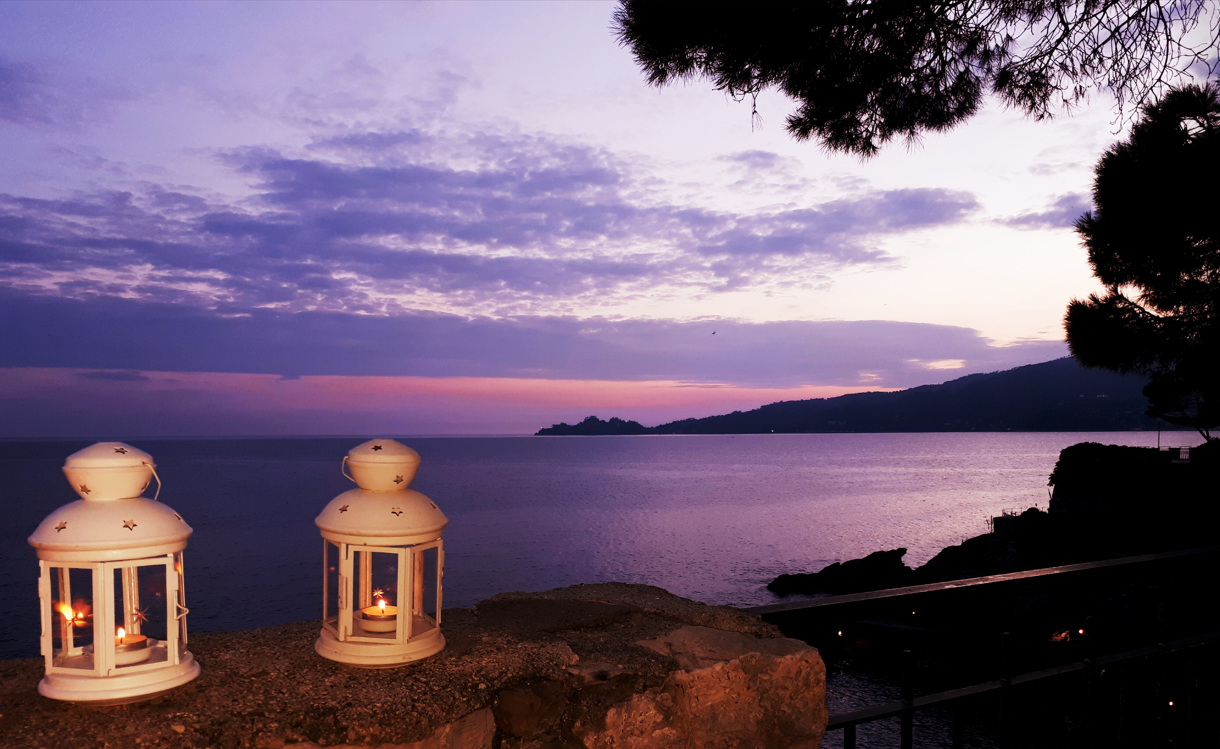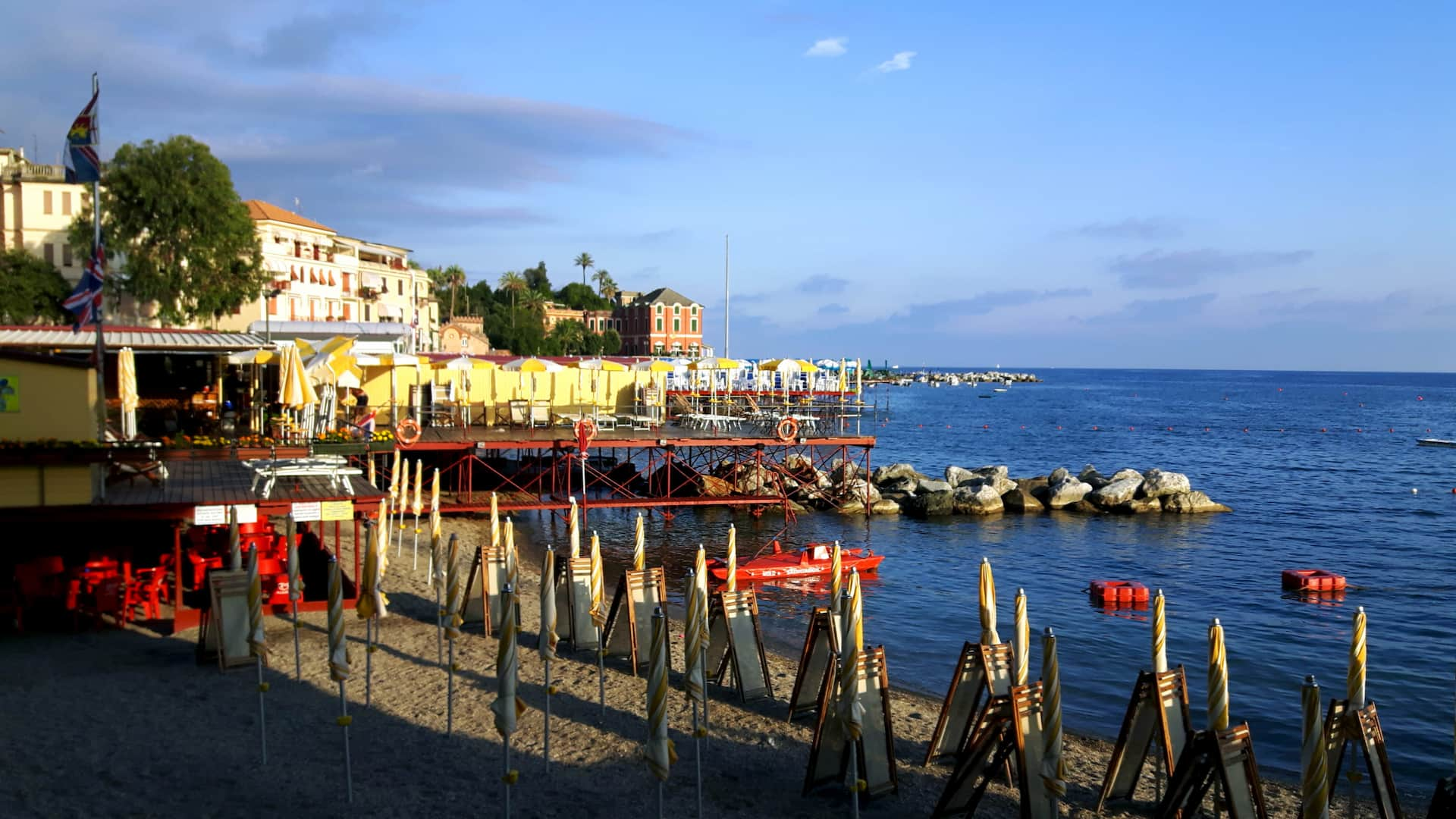
The illusion of colour
The eastern part of Liguria, a thin strip of land squeezed between the mountains and the sea, offers breathtaking natural scenery.
But also contributing to making this landscape unique and unforgettable over time has been the flair and work of craftsmen who, with great skill, have coloured the seaside villages, decorating the façades of typical Ligurian houses with the extraordinary Genoese ‘Trompe l’Oeil’ technique.
They say that in Liguria people preferred to paint colonnades, pilasters and tympanums rather than actually build them, because this saved money. But perhaps this is just a malicious rumour that echoes the commonplace according to which the Genoese, and more generally the Ligurians, sin from avarice.
In fact, this technique, which originated between the 16th and 17th centuries, was probably the only one that allowed for the decoration of the façades of Ligurian houses, built next to each other or separated only by the typical ‘carruggi’, the narrow alleys where the paintbrush certainly reached better than the hammer and chisel.
The ‘Trompe l’Oeil’ technique consists of painting a wall into a three-dimensional scene, sometimes reproducing the effect of a precious material such as marble or briarwood.
La parola “Trompe L’Oeil” significa appunto “inganno dell’occhio”. It is a type of pictorial decoration that follows precise rules of perspective and renders the illusion of reality through an appropriate arrangement of light and shadow and a skilful use of perspective.

The particular charm of the ‘Trompe L’Oeil’ is perceived at the very moment one discovers the visual deception created by the painter’s skill.
This technique, later also applied to more sumptuous dwellings, and still widespread in eastern Liguria today, is carried out by local craftsmen working in often family-run businesses, within which the secrets of the trade are jealously handed down from generation to generation.

These artists like to personalise their works, and often decorate from scratch, even when working on old paintings damaged by time and saltiness.
Sometimes, however, historical restoration work has to be carried out, and then it is necessary to intervene with accurate photographic surveys and careful tracing. The original drawing is transferred onto transparent paper, perforated in the main strokes and then applied to the wall and dabbed with colour.
This is a complex technique, with different solutions depending on the position to which the decoration is to be applied: “under-window”, “under-front”, “under-frame”.

But the ‘Trompe l’Oeil’ technique is not limited to the reproduction of stuccoes and architectural decorations
Some façades are veritable works of art that amaze with their richness of detail. A triumph of colours reflected in the limpid waters of the Gulf multiply and shimmer, enveloping and captivating the guest.
Examples of ‘Trompe L’Oeil’ can be found almost everywhere on the Portofino Coast.
Strolling through the alleyways of Chiavari, Sestri Levante, Lavagna, Moneglia, Portofino, Santa Margherita Ligure, Rapallo, Zoagli and Camogli, don’t forget to look up to admire the façade of a palace, or even a simple fake window painted to adorn the wall of a house The beauty of these paintings will not fail to amaze you.






